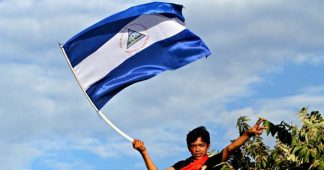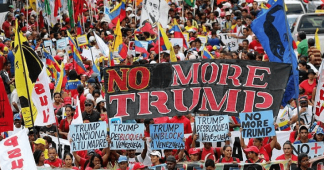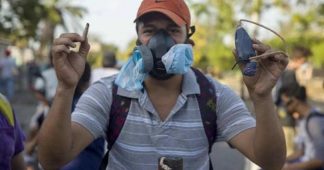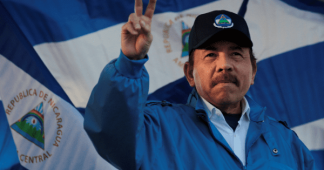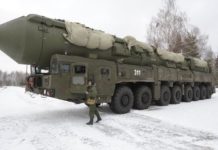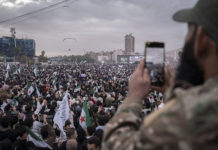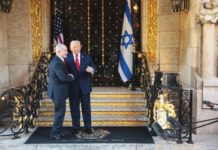In 36 years of living in Latin America I have learned that any time a country changes its conditions so that poverty decreases and the standard of living improves, the United States wages some kind of war on that country. It has waged unconventional warfare on Nicaragua since the Sandinistas returned to the presidency in 2007 providing millions of dollars to nongovernmental organizations, more than 25 different media, three “human rights” groups and many individuals whose job is to lie for their salaries. Since 2017, the US Agency for International Development (USAID) has disbursed over $89 million with the primary focus on “governance” and promoting challenges to the Nicaraguan government. Another aspect of US aggression is the economic sanctions. The U.S. uses its influence to oppose any loan, financial or technical assistance to the government of Nicaragua from international banks and organizations.
In July this year, USAID contracted a US company to head up the current phase of their war through the November 2021 elections. The plan is titled RAIN – Responsive Action in Nicaragua. It is a thinly veiled plan to mount domestic and international pressure for “regime change” in Nicaragua. RAIN is a plan to undermine public order with actions [violent and otherwise] before, during and after the 2021 elections. The document suggests there is a crisis and “economic debacle” with potential to become a “humanitarian emergency” due to Covid-19. Since March the opposition focused most of their attention on telling lies in the media. This strategy had some success internationally but not much at home since Nicaragua has the lowest Covid mortality rate in the region.
The opposition is now on to new topics – like trying to spread the lie that some of the grass-fed beef that is exported to the US is from Indigenous land supposedly stolen in recent years. Although Nicaragua has had some problem with this, it has been much less under the Sandinista government than under the three previous US-supported governments.
One reason the government has a good relationship with much of the Indigenous is their commitment to granting title to the original territories. There are now autonomous indigenous governments elected according to their ancestral forms of organization. There are 23 original territories with 314 communities and 200,000 people. Nearly 38 thousand square kilometers have been titled to the indigenous groups. They have non-transferrable titles, helping to curb illegal land sales and deforestation. The authorities that administer these lands are designated by the communities themselves.
This is 31% of the national territory and more than 55% of the territory of the Caribbean Coast where 61% have some type of forest. Nicaragua has gained great credibility in environmental issues and was just voted to be part of the World Bank’s Carbon Fund Board (Informe Pastran, 23 Oct. 2020).
There is now a special battalion patrolling these extremely large expanses of land in coordination with many of the Miskito and Mayagna communities. Since 2007 special emphasis has been given to improving every aspect of life in the Autonomous Regions increasing dramatically health and school facilities, electricity, potable water, sanitation, good paved roads and decreasing every aspect of poverty.
There are internal disputes related to selling land among the 75 different communities of the Mayagna. Their communities elect their own authorities. But things aren’t perfect and the violence is sometimes internal. On Jan. 29, Gustavo Sebastian, president of the Mayagna indigenous territory government, said that a group of Mayagnas shot at a group of community members in an act of revenge for a December 2019 action. Four men were killed, two hospitalized with injuries and 12 homes burned. Then on February 12 the police captured the leader of the group responsible for the January violence in Alal and Wakuruskasna. (Radio La Primerisima, 12 Feb. 2020)
On October 22, Solón Guerrero, director of the Federation of Nicaraguan Cattlemen’s Association, stated that they will present documents that prove that their group signed agreements to protect the reserves held by the indigenous populations. The executive director of the Nicaraguan Chamber of the Meat Industry, Juan Bautista Velásquez, said that the cattle that are processed are identified with two tags, because the cattle come from farms certified by the Institute for Agricultural Protection and Health (IPSA). He said that if the North American market was cancelled, more than 600 thousand people would lose their jobs and 140 thousand producers would be affected.
This misleading story is being promoted by members of Nicaragua’s opposition who are paid with USAID or NED (National Endowment for Democracy) funds. It is a new attempt to interfere with and hurt Nicaragua. Now it is under the guise of protecting indigenous people. While it is true that things are not perfect in Nicaragua, the advances and protections for Indigenous people are much better than in most other countries. Certainly the U.S. treatment of indigenous people is no model to follow. While there are periodic incidents of friction or conflict in the vast expanse of the autonomous zones, this has little to do with the cattle raising and beef export industry where hundreds of thousands of Nicaraguans work.
* Nan McCurdy is a United Methodist Missionary and 36 year resident of Nicaragua. She is currently working with the rural poor in Puebla Mexico and can be reached at nanmigl@yahoo.com
Published at taskforceamericas.org
